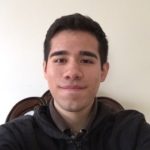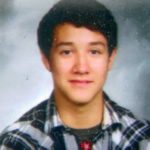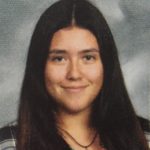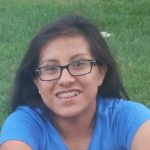A Grand Opportunity for Learner Voices to be Heard
Learner Voices 25 August 2016
Education Reimagined was eager to hear from five learners from East Leyden High School, Chicago, who had the last-minute opportunity to participate at the AASA Digital Consortium hosted by Google. Their reflections on what it meant to have their voices truly heard and valued are inspiring.
For the five of us, what initially began as a three-day volunteer opportunity at Leyden’s Symposium, suddenly became a grand opportunity.
On that Thursday morning, Mr. Markey, East Leyden’s principal, gathered up all the volunteers and announced that our superintendent, Dr. Polyak, wanted to give us the chance to go to Google’s offices. None of us were entirely sure why we were invited. After going through security and receiving our name tags, we were brought inside a conference room—not knowing what to expect.
We sat in the back of a well-lit room with large windows for a period of time until some of Google’s staff asked us to find a seat among the sea of superintendents. With that, the butterflies began to kick in. These are our individual experiences of what unfolded next.
After hearing my point of view, the group of educators at my table agreed upon moving towards student-centered learning…
Uriel Martinez

Uriel Martinez, 16: Uriel Martinez is a junior at East Leyden High School and is deeply interested in science—mainly learning about physics, chemistry, astronomy, and biology.
The opportunity to give educational insight from the student’s perspective to individuals at the head of education was not one I ever expected to have.
After Kelly Young introduced how the shift in thought about gravitational theory from Newtonian physics to general relativity was analogous to a paradigm shift in teaching within the classroom, I volunteered to further elaborate the parallel. I was hooked from that point on. I got to answer questions from the superintendents at my small group table, like “What are you frustrated with at your school?” and “What is the role of technology at your school?” I emphasized the periodic absence of individualized learning within the classroom and the lack of ability to have students learn what they are really interested in.
After hearing my point of view, the group of educators at my table agreed on moving towards student-centered learning and giving kids the opportunity to explore topics they are invested in, as well as giving them opportunities to aid their community by volunteering.
Hopefully, my participation in the Digital Consortium will bring us one step closer to education leaders having conversations with students and embracing a paradigm shift from traditional education to one that focuses on the student—encouraging collaboration with others and making an impact in the community. And, eventually, coming up with innovative ideas that are just as radical as those brought forth by Einstein and Heisenberg.
The administrators, unless told otherwise, think of school as they experienced it. I was their eyes and gave them a refreshed vision of the current school system.
Nathaniel Martinez
Nathaniel Martinez, 14: When not occupied with school-related activities, he is learning about the Olympics and science— primarily meteorology and, more specifically, severe weather.
Sitting down with a group of superintendents, the design process began. We started with the basics—discussing what a student should ideally experience while at school. At first, I was nervous to speak with the superintendents, but through this open discussion, they made me feel like my voice actually mattered.
The superintendents and I were invested in this conversation—trying to build a functional school system for all. This really opened my eyes to what superintendents are trying to do for their students. There is so much work that goes on behind the scenes. As students, we aren’t exposed to what the superintendents do, but in a way, the opposite is also true.
With this meeting of students and administrators, we were able to bridge the divide. The administrators, unless told otherwise, think of school as they experienced it. I was their eyes and gave them a refreshed vision of the current school system.
Although this experience was incredibly insightful, I believe we need more variety of students speaking with administrators. There were nine students from two schools that day. There is no way you can get the full view of the school system with those numbers. You need students from the city, rural areas, suburbs, and of differing intellectual levels to really get the full picture. I am incredibly grateful that I was allowed to meet with superintendents to help in any way I could to improve the school system.
We left with the big idea of wanting to get students involved a bit more in school design processes.
Alan Ramirez
Alan Ramirez, 16: Alan is a junior at East Leyden High School. He is currently enrolled in four AP classes and is involved in after-school activities like songwriting club and snowball club—a club dedicated to the prevention of drug and alcohol use. He also does theatre all year long.
My group was asked to come up with an outside-the-box idea that could be incorporated into school systems for the improvement of our high school experience. The first thing my group began to do was ask me questions about myself and my learning experiences. They wanted to get to know me and get the point of view of students. I really liked that they included me in the conversation as if I was a superintendent, too. And, they seemed to really enjoy seeing things from my perspective.
We soon realized that the answer was simple and an example was already occurring within the event—include students in processes they aren’t regularly involved in. A small scale example brought up was, if an English teacher chooses the year’s reading material on her own, the students might not enjoy the reading that is given to them. However, if the teacher were to consult students on this particular choice, they’ll choose something that interests most of them.
We left with the big idea of wanting to get students involved a bit more in school design processes. This was a really great experience because I was able to see through the lens of the superintendents, and they were able to see through the lens of the students. It was an amazing opportunity, and I enjoyed the event very much.
They seemed very interested in the suggestions I had to offer…this made me feel like my opinions really mattered.
Alyssa Guillu
Alyssa Guillu, 16: Alyssa is a junior at East Leyden High school. Alyssa is involved in marching band, theatre, Key Club, Think Tank, and History Honors Club. Alyssa started a UNICEF chapter at her school and volunteers at her local hospital.
This was one of the first experiences I’ve had in which I was surrounded by such highly influential members of the education system. Sitting as the only student in a group full of superintendents felt very intimidating at first, but as the design thinking process started, I slowly became more comfortable sharing my ideas with them.
The superintendents seemed very interested in the suggestions I had to offer about the education system and how I felt about my education overall. This made me feel like my opinions really mattered. One of the superintendents even told me that it was refreshing to hear a student’s point of view, as it is something they don’t often get the chance to do.
As we began prototyping, we found that learner-centered education was the main theme of our ideas. We continued to build our ideas from this theme and worked to create a potential system that allows the student to choose their own educational path.
Overall, working with superintendents to create a potential educational system that was solely learner-centered not only made me feel like my voice was heard, but also that I had the ability, as a student, to influence change.
…if students are advised to pursue a major based only on the size of their future paycheck, it limits their exposure to careers that might contain their true passions.
Lesley Ayala
Lesley Ayala, 17: Lesley is a senior at East Leyden High school. She is a Guided Study Mentor who assists students on the journey to bettering their educational performance. She also takes part in Students Against Destructive Decisions (S.A.D.D.), runs for Leyden’s cross country team, and is a player on Leyden’s soccer team. Once she completes high school, she plans to pursue a law degree.
When Leyden’s superintendent needed a group of students to attend the Google conference with AASA, I quickly ran for my phone to let my mom know I was about to get on a bus with over 30 superintendents. She gladly replied, “Okay, good luck!”
When asked to sit with the superintendents at the conference, I quickly made my way to the closest table, introduced myself, and received a couple of smiles in exchange.
I attentively listened to the instructions given by Kelly Young and the Google presenters—nervously thinking to myself, “Oh boy. What did I get myself into?” Easing my nerves, the superintendent sitting next to me kindly asked if he could ask me the first set of questions. During the Q&A, I made the point that if students are advised to pursue a major based only on the size of their future paycheck, it limits their exposure to careers that might contain their true passions.
What I initially thought would be the most awkward thirty minutes of my life, unfortunately, flew by too quickly. Opportunities like these do not come frequently, and I wish it could have lasted longer. I’m still grateful for the opportunity to participate at the conference in Chicago’s Google Office. It was a superb experience to express a student’s standpoint to the leaders of our education.
New resources and news on The Big Idea!
×
We recently announced a new R&D acceleration initiative to connect and support local communities ready to bring public, equitable, learner-centered ecosystems to life.



